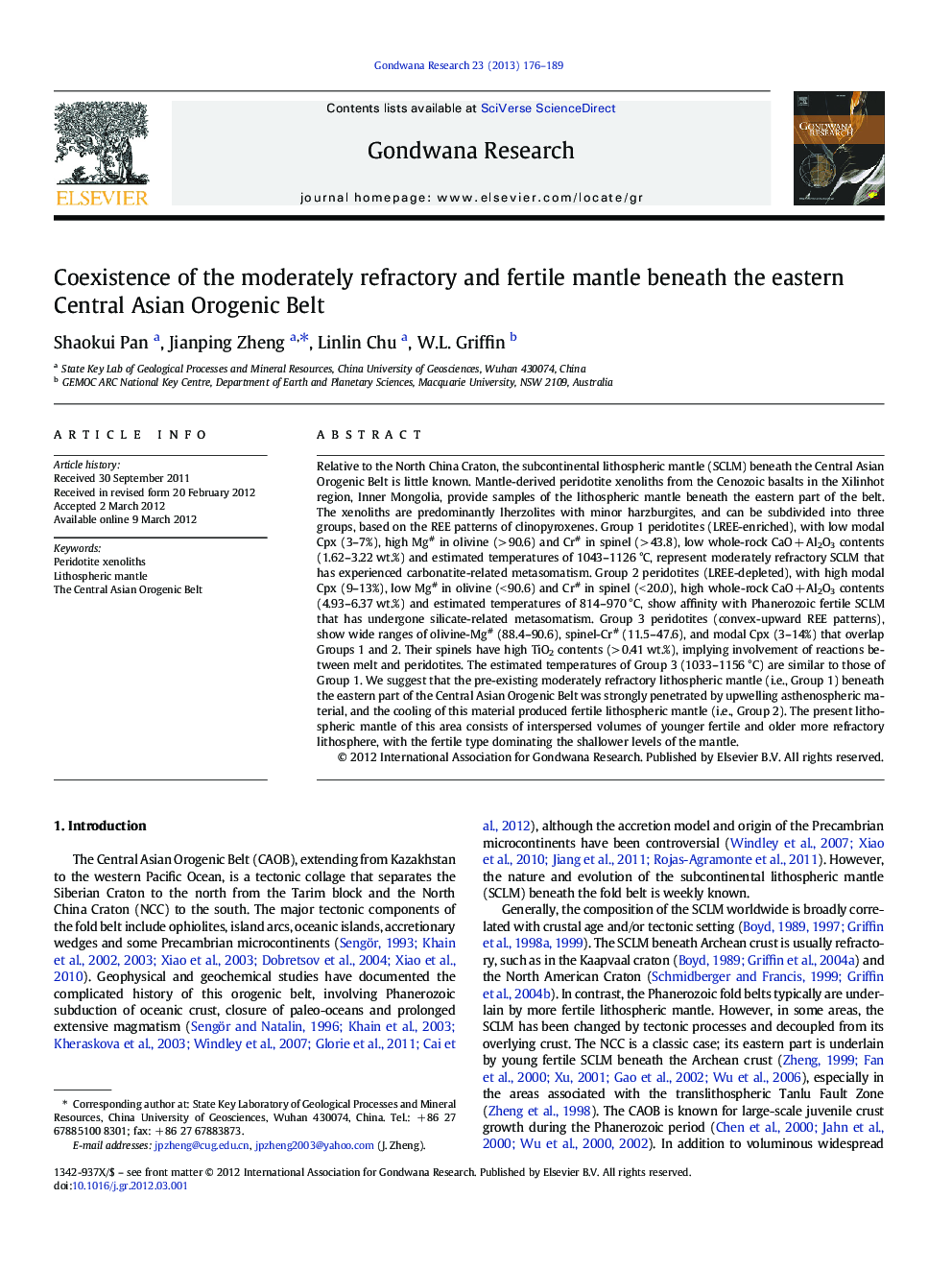| کد مقاله | کد نشریه | سال انتشار | مقاله انگلیسی | نسخه تمام متن |
|---|---|---|---|---|
| 4727541 | 1356382 | 2013 | 14 صفحه PDF | دانلود رایگان |
Relative to the North China Craton, the subcontinental lithospheric mantle (SCLM) beneath the Central Asian Orogenic Belt is little known. Mantle-derived peridotite xenoliths from the Cenozoic basalts in the Xilinhot region, Inner Mongolia, provide samples of the lithospheric mantle beneath the eastern part of the belt. The xenoliths are predominantly lherzolites with minor harzburgites, and can be subdivided into three groups, based on the REE patterns of clinopyroxenes. Group 1 peridotites (LREE-enriched), with low modal Cpx (3–7%), high Mg# in olivine (> 90.6) and Cr# in spinel (> 43.8), low whole-rock CaO + Al2O3 contents (1.62–3.22 wt.%) and estimated temperatures of 1043–1126 °C, represent moderately refractory SCLM that has experienced carbonatite-related metasomatism. Group 2 peridotites (LREE-depleted), with high modal Cpx (9–13%), low Mg# in olivine (< 90.6) and Cr# in spinel (< 20.0), high whole-rock CaO + Al2O3 contents (4.93–6.37 wt.%) and estimated temperatures of 814–970 °C, show affinity with Phanerozoic fertile SCLM that has undergone silicate-related metasomatism. Group 3 peridotites (convex-upward REE patterns), show wide ranges of olivine-Mg# (88.4–90.6), spinel-Cr# (11.5–47.6), and modal Cpx (3–14%) that overlap Groups 1 and 2. Their spinels have high TiO2 contents (> 0.41 wt.%), implying involvement of reactions between melt and peridotites. The estimated temperatures of Group 3 (1033–1156 °C) are similar to those of Group 1. We suggest that the pre-existing moderately refractory lithospheric mantle (i.e., Group 1) beneath the eastern part of the Central Asian Orogenic Belt was strongly penetrated by upwelling asthenospheric material, and the cooling of this material produced fertile lithospheric mantle (i.e., Group 2). The present lithospheric mantle of this area consists of interspersed volumes of younger fertile and older more refractory lithosphere, with the fertile type dominating the shallower levels of the mantle.
Figure optionsDownload as PowerPoint slideHighlights
► Xenoliths from Xilinhot include major fertile and minor moderately refractory peridotites.
► Coexistence of different types of SCLM beneath the eastern CAOB identified.
► Upwelling and subsequent cooling of asthenosphere accompanied the SCLM evolution.
Journal: Gondwana Research - Volume 23, Issue 1, January 2013, Pages 176–189
